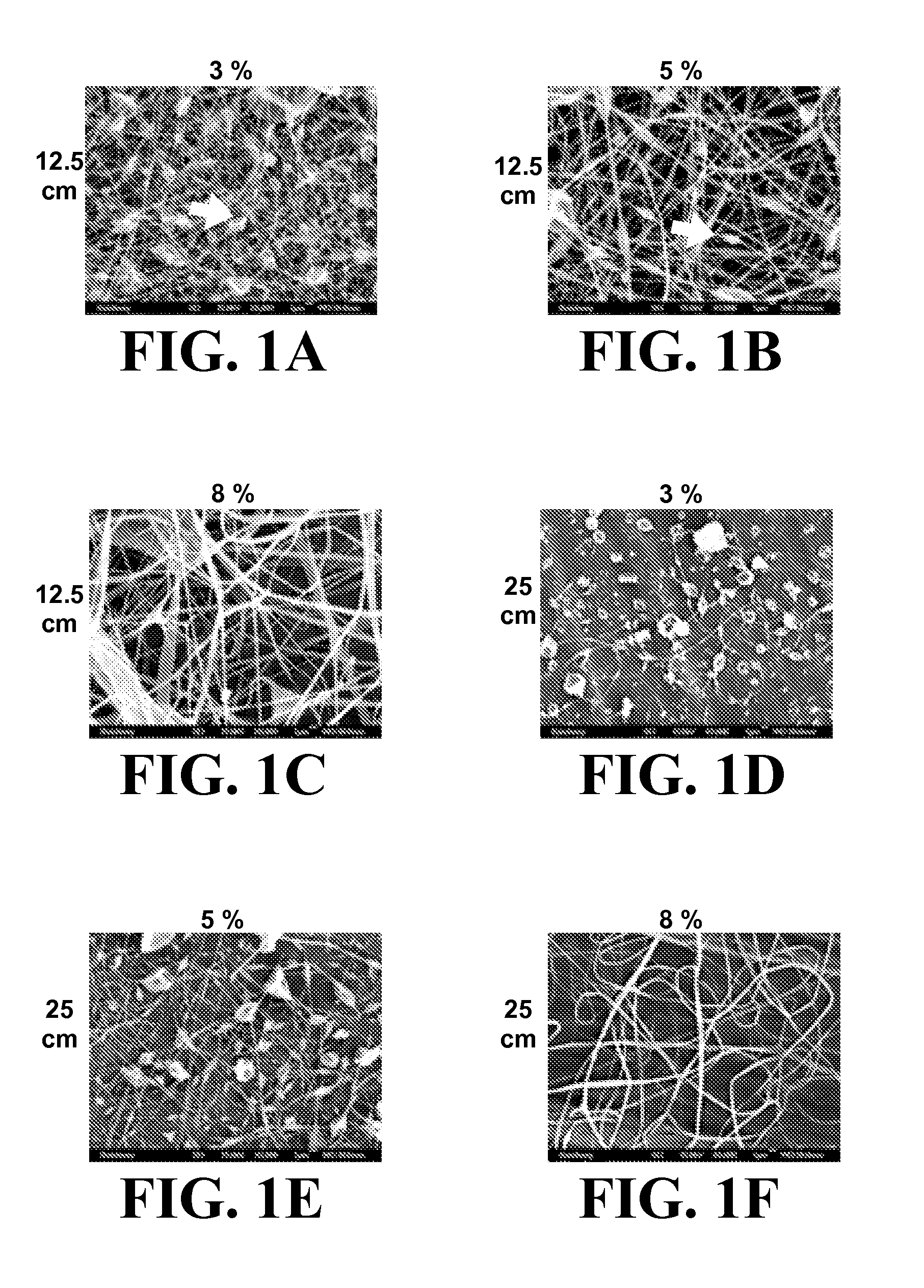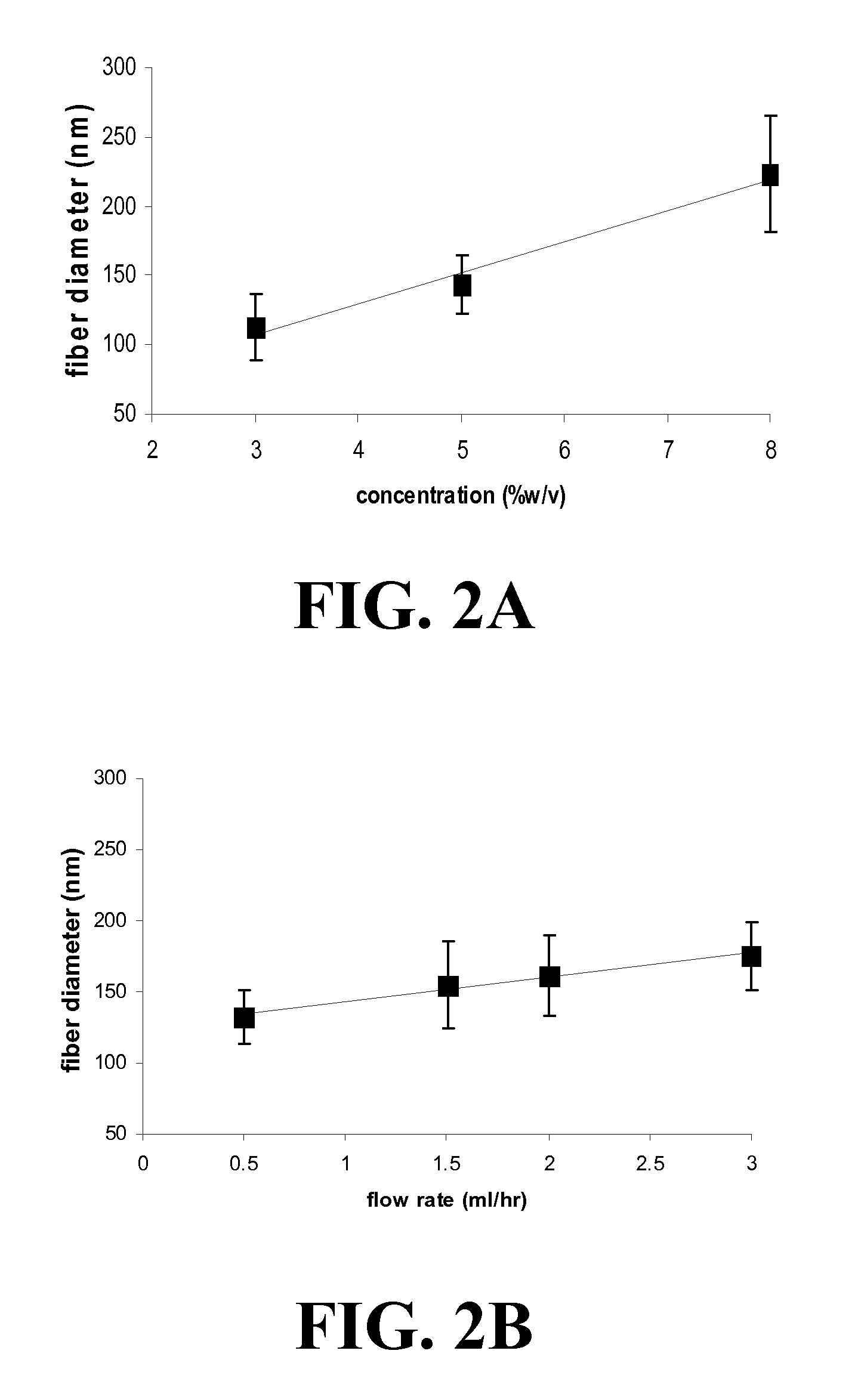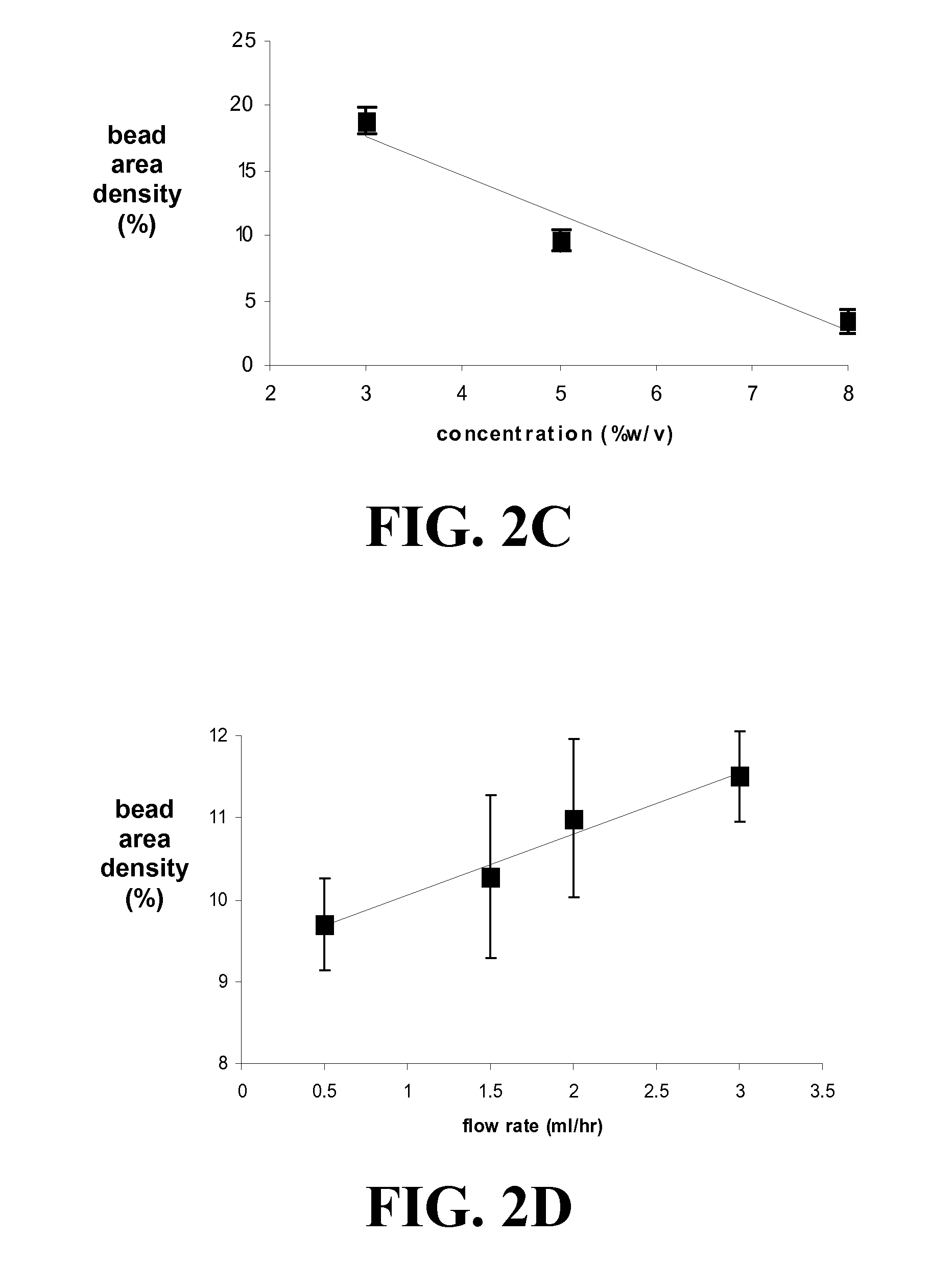Compositions and Methods for Making and Using Laminin Nanofibers
a technology of laminin nanofibers and compositions, applied in the field of compositions, methods, and apparatuses for preparing and using electrospun laminin, can solve the problems of mesh loss, large percentage of porosity and surface roughness, and inability to manufacture feature sizes on the nanometer scale with traditional printing and etching techniques, etc., to achieve novel biomimetic effects, improve the effect of tensile strength and long shelf li
- Summary
- Abstract
- Description
- Claims
- Application Information
AI Technical Summary
Benefits of technology
Problems solved by technology
Method used
Image
Examples
embodiments
[0159]The present invention provides compositions and methods for mimicking three dimensional scaffolding as found in vivo to better mimic how cells grow and differentiate. Cell proliferation and differentiation are regulated by unique spatial interactions between cells. Spatial cues in conjunction with the topologically distinct location of specific attachment molecules, and the release of specific humoral factors, such as growth and differentiation factors, function as signals to the cell to proliferate, differentiate, migrate, remain in a resting state, or initiate apoptosis. The capacity of the cell to respond to these signaling triggers is dependent on the availability of specific cell surface and intracellular receptors. The signal transduction pathways that are stimulated by these molecules depend on the organization and structure of the cell cytoskeleton whose architecture is a function of multipoint cell surface interactions with these signaling molecules, surrounding cells...
example 1
Materials and Methods
[0257]The solvent, 1,1,1,3,3,3-hexafluoro-2-propanol (HFP) was purchased from Sigma (St Louis, Mo.). All cell culture reagents were purchased from Fisher Scientific (Pittsburgh, Pa.).
[0258]Laminin Isolation
[0259]Laminin I was purified from the EHS tumor according to previously established methods. The final laminin solution was subjected to 2 rounds of precipitation with 45% ammonium sulfate to remove most growth factors present. Purity of laminin was evaluated by SDS-PAGE and Western analysis with affinity purified antibodies to type IV collagen, entactin / nidogen and perlecan, the major contaminants of such preparations. Purity was determined to be greater than 99% laminin (w / v). Laminin was stored at −80° C.
[0260]Laminin Electrospinning
[0261]For the parametric study, a series of process parameters was chosen within ranges shown to be successful in creating submicron or nanoscale fibers of other ECM proteins such as collagens [13] and fibrinogen. Laminin was di...
example 2
Laminin Nanofiber Mesh Substrates for Stem Cell Growth and Differentiation
[0295]Methods—Embryonic Stem Cell Culture: D3 and ES-E14TG2a murine embryonic stem cells were cultured on STO or CF1 mouse embryonic fibroblast feeder layers, fed daily and sub-cultured every 2 or 3 days. The media used was DMEM+15% ES-qualified FBS supplemented with L-glutamine, non essential amino acids, pyruvate, 2-mercaptoethanol, and leukemia inhibitory factor (Chemicon). All tissue culture reagents were from GIBCO except as noted.
[0296]Fabricated meshes of laminin I nanofibers (LNFs) with fiber size (10-150 nM dia.), geometry, and porosity of authentic basement membranes were fabricated using electrospinning methods. Unlike previously described NFs synthesized from protein polymers, meshes of LNFs retain their structural features when wetted and do not require fixation by chemical cross-linking, which often destroys biological activity. Embryonic stem cells (ESCs) and multipotent stem cells from adipose ...
PUM
| Property | Measurement | Unit |
|---|---|---|
| flow rate | aaaaa | aaaaa |
| flow rate | aaaaa | aaaaa |
| flow rate | aaaaa | aaaaa |
Abstract
Description
Claims
Application Information
 Login to View More
Login to View More - R&D
- Intellectual Property
- Life Sciences
- Materials
- Tech Scout
- Unparalleled Data Quality
- Higher Quality Content
- 60% Fewer Hallucinations
Browse by: Latest US Patents, China's latest patents, Technical Efficacy Thesaurus, Application Domain, Technology Topic, Popular Technical Reports.
© 2025 PatSnap. All rights reserved.Legal|Privacy policy|Modern Slavery Act Transparency Statement|Sitemap|About US| Contact US: help@patsnap.com



